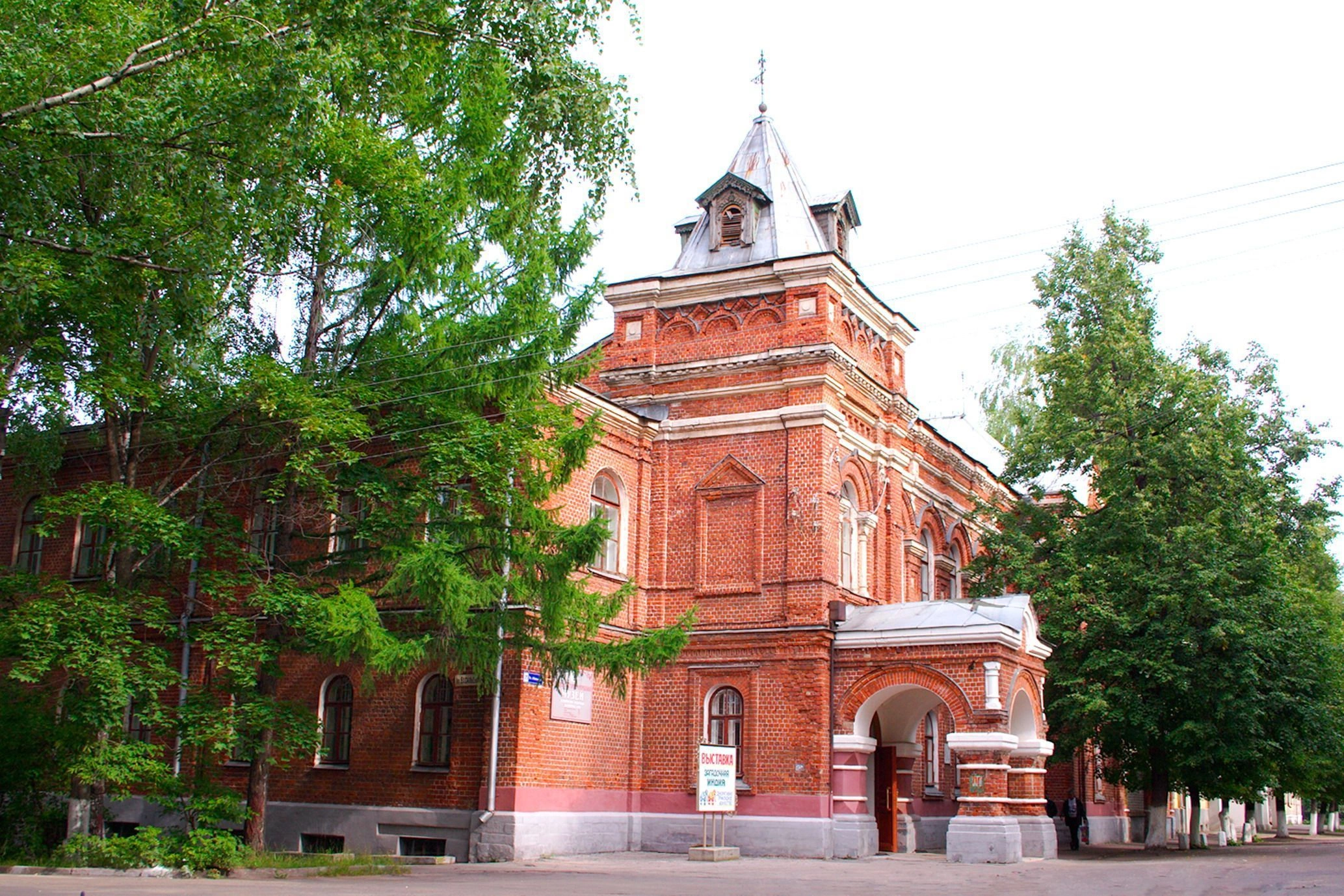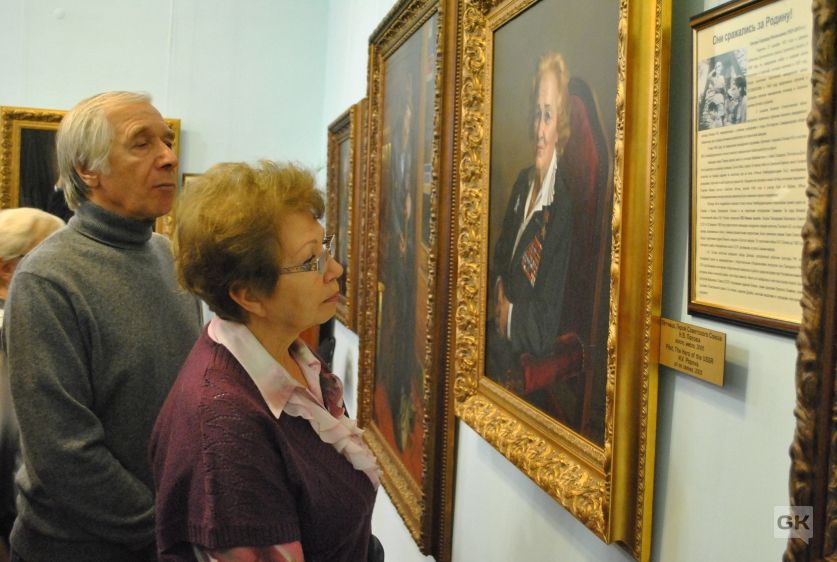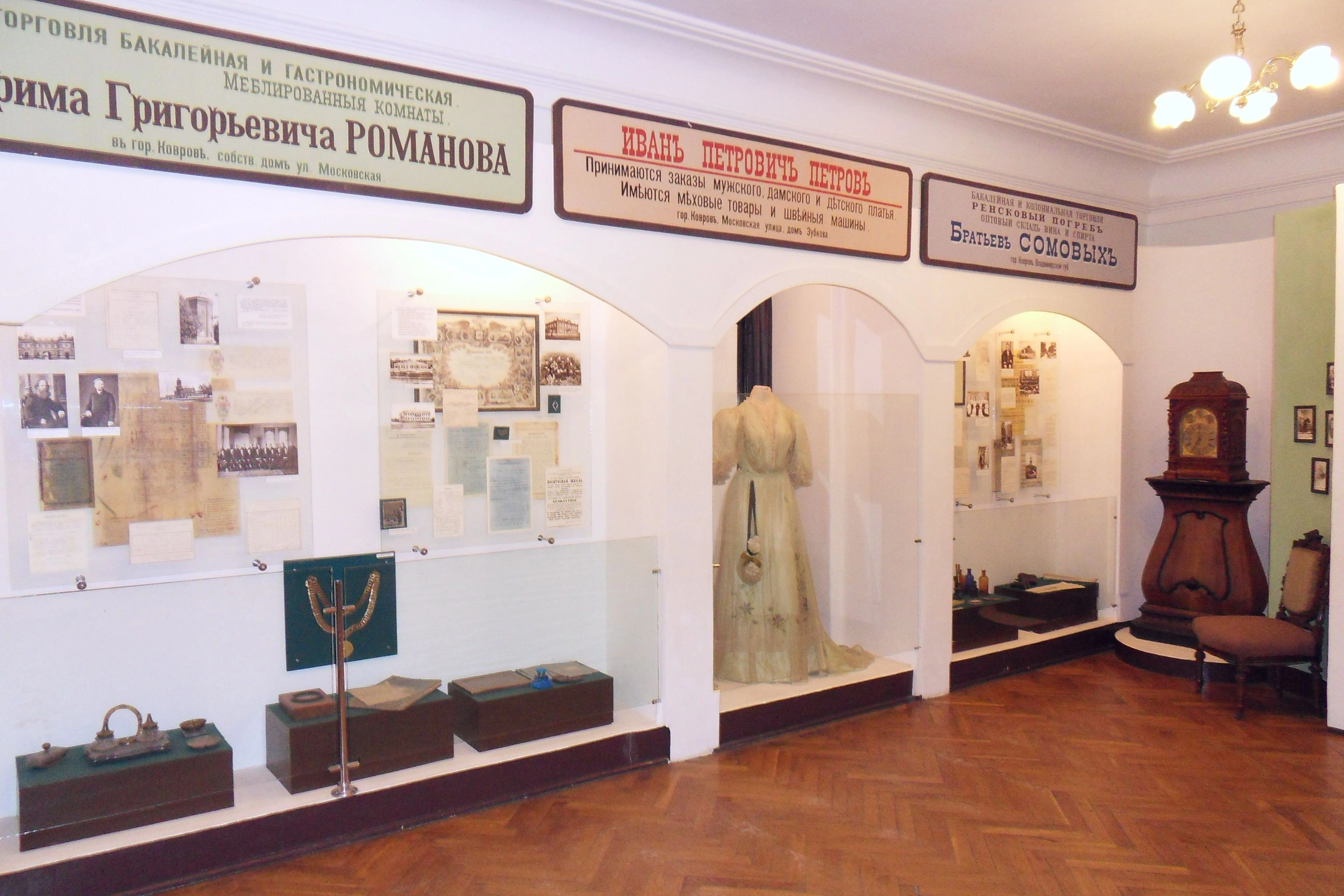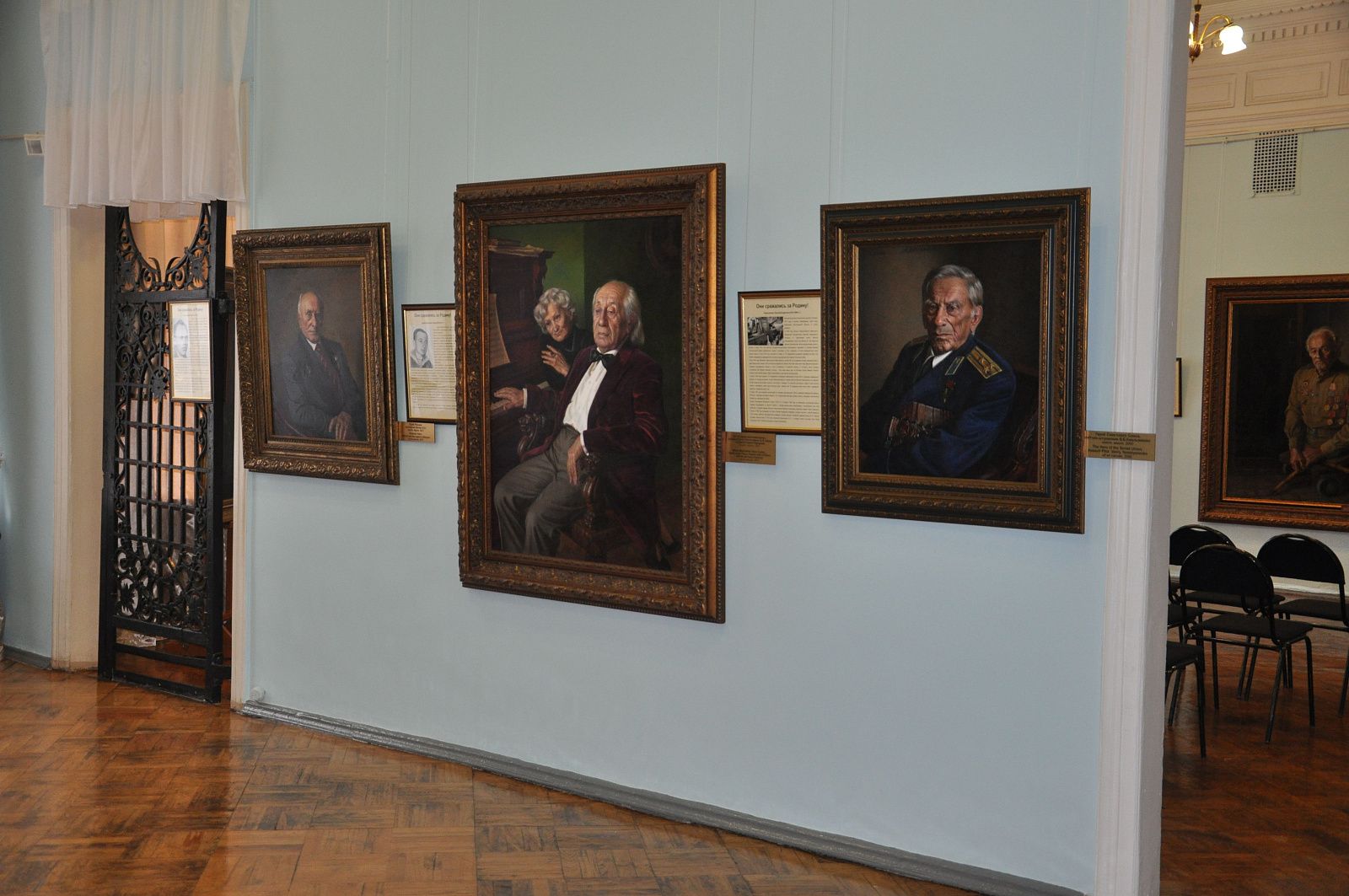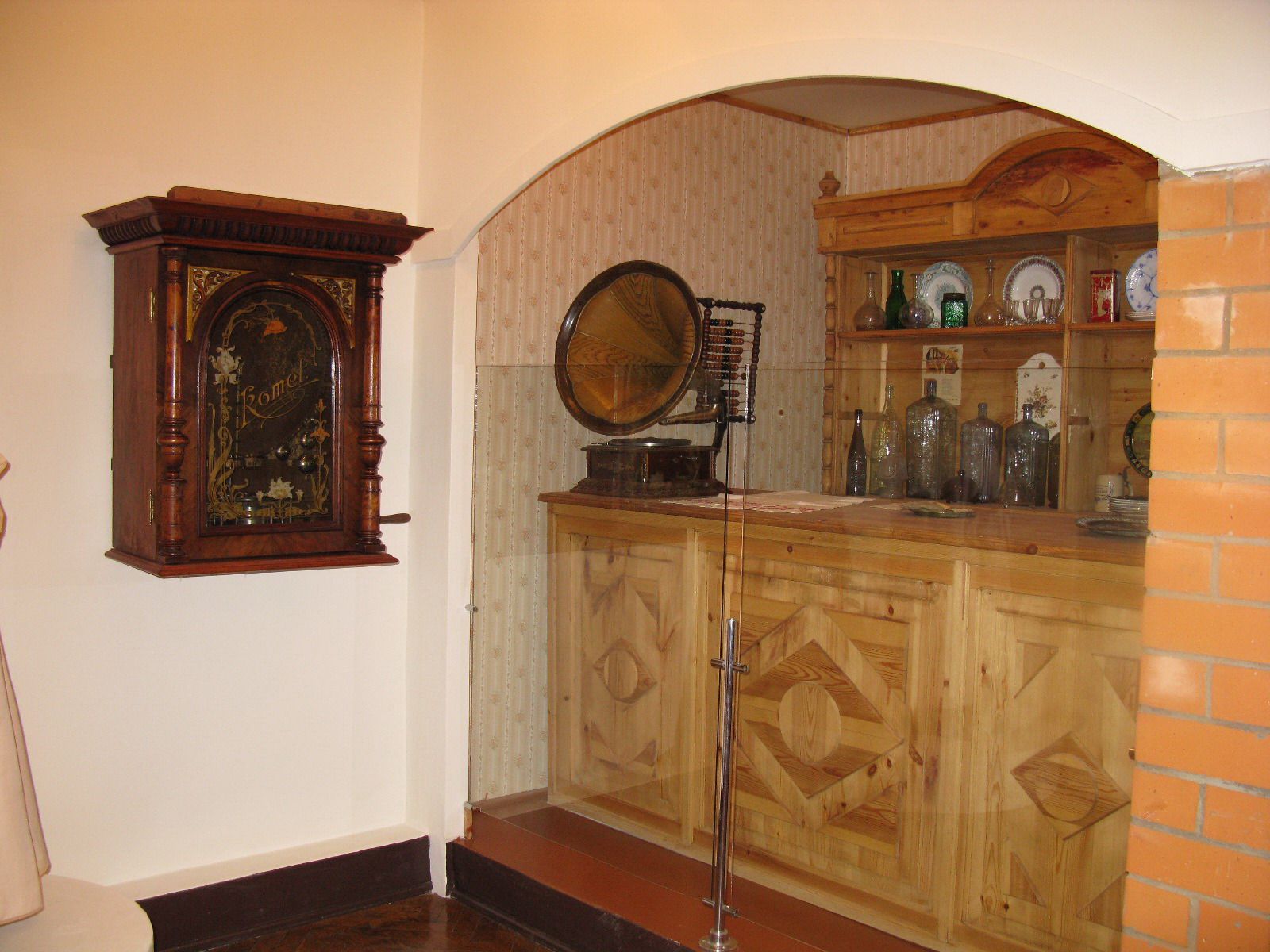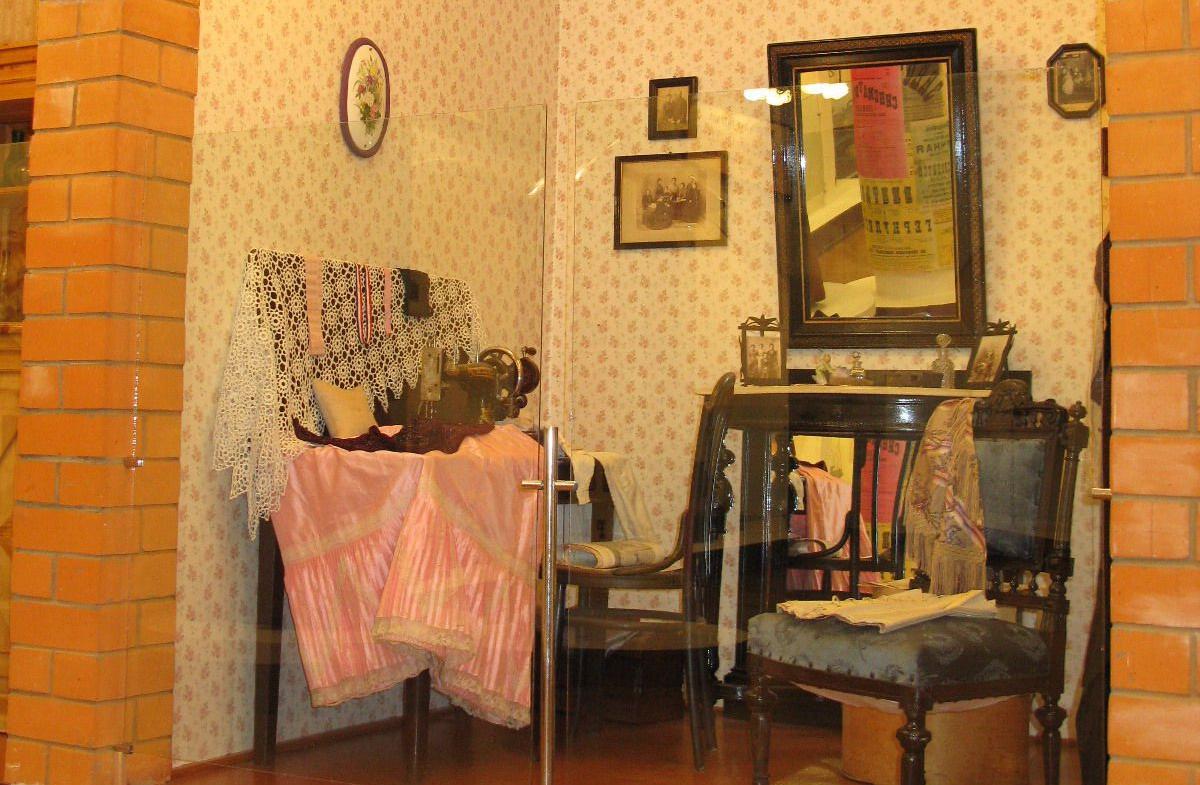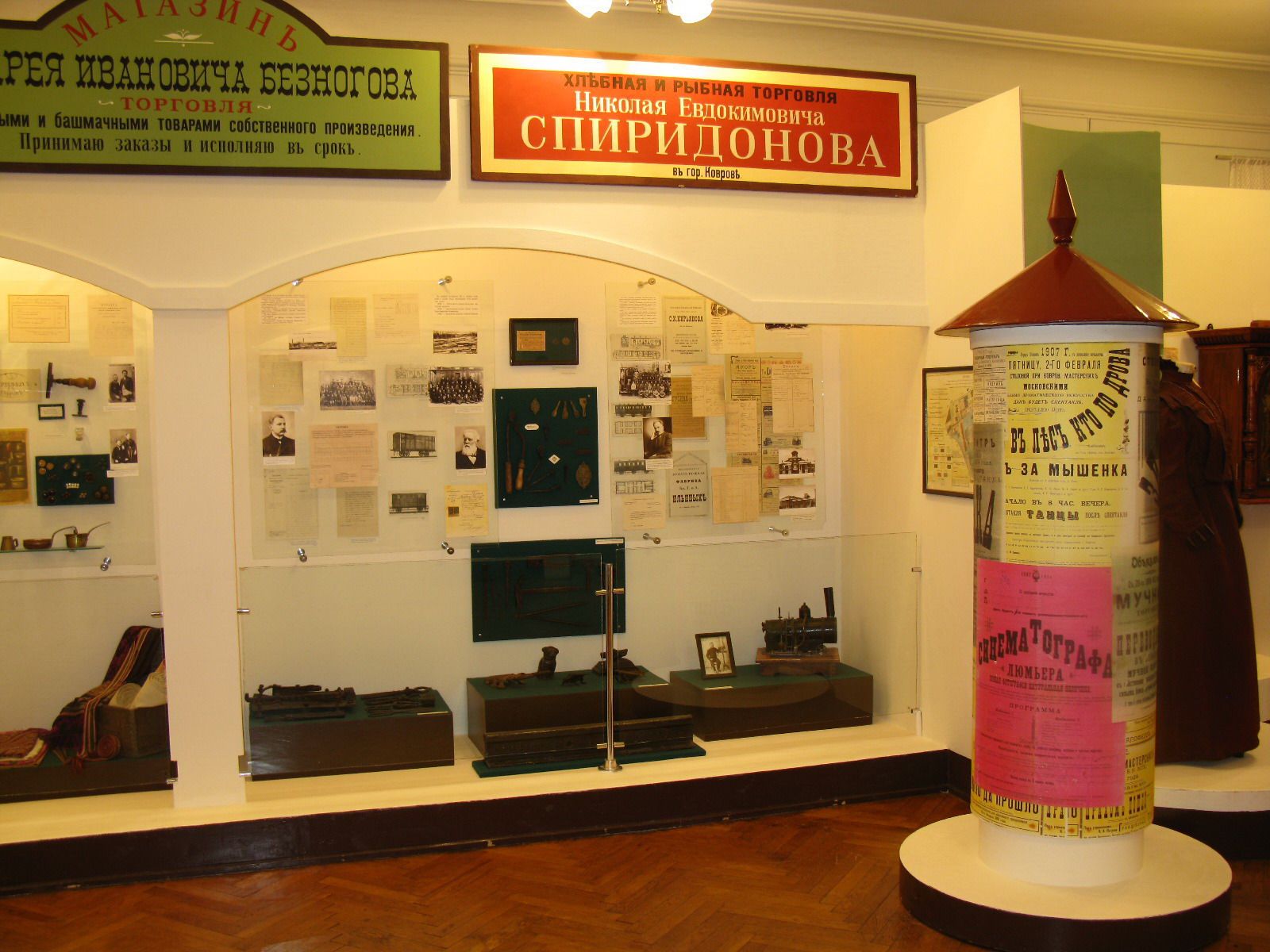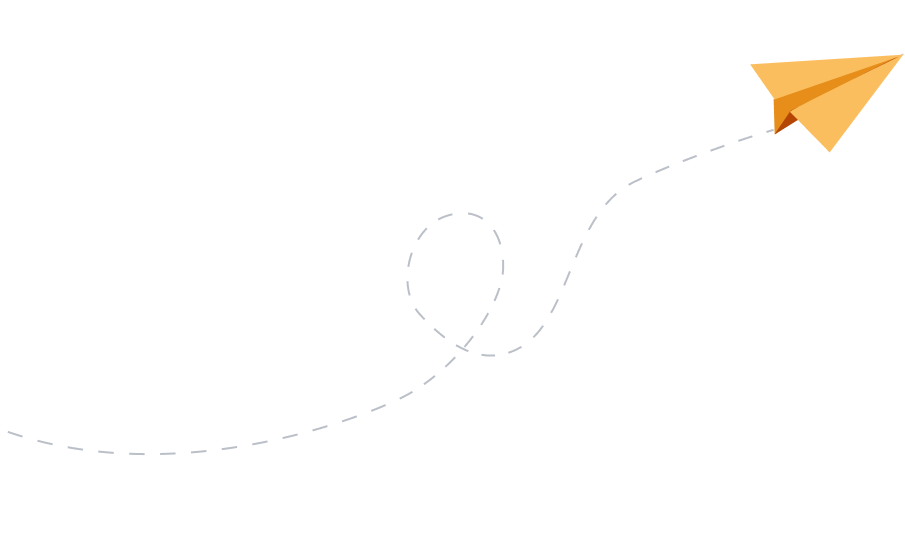Kovrov Historical and Memorial Museum
The Museum's key historical expositions are The Kovrov Land from Ancient Times to the 19th Century, The Chief Town of Kovrov at the Turn of the 19th and 20th Centuries, and Forever in People's Memory, a military history exposition
1927 год
The exposition The Kovrov Land from Ancient Times to the 19th Century presents relict plants and animals that appeared on the Earth millions of years ago, palaeontological finds, archaeological cultures of Fatyanovo, Abashevo, and Ugro-Finnish tribes. Here, the Museum exhibits the results of the last archaeological expedition carried out in the Kovrov District in 1981–1989.
The Chief Town of Kovrov at the Turn of the 19th and 20th Centuries exposition offers a kind of walk around Kovrov with lots of churches, strong merchant houses, and shops with bright advertisements. Visitors can look into one of such shops, as well as put themselves in the shoes of a craftsman, enter the room of a modiste, see the office of an official. The image of Kovrov comes alive on old postcards and photographs with street views and panoramas.
The Forever in People's Memory exposition covers the patriotic theme. It features exhibits about Kovrov residents who took part in battles with the Mongols, during the Time of Troubles in the early 17th century, as well as in the Patriotic War of 1812, the Crimean, Russo-Turkish, Russo-Japanese, World War I, and other wars of Imperial Russia. A separate hall is dedicated to those who defended the country during the Second World War in 1941–1945.
Founded on 27 March 1927, the Kovrov Historical and Memorial Museum today is a large town museum complex consisting of six museums and a historical and memorial park.
The Museum's main building is located at 20 Abelmana ul. It houses the administration, museum depositories, as well as historical displays and exhibition halls.
Formerly, it was the building of the local government, one of the most beautiful in the city, erected in 1888–1889 by Grigory Ribas, a Moscow architect. In 1975, the Museum moved to these premises previously occupied by the City Committee of the Communist Party of the Soviet Union.

